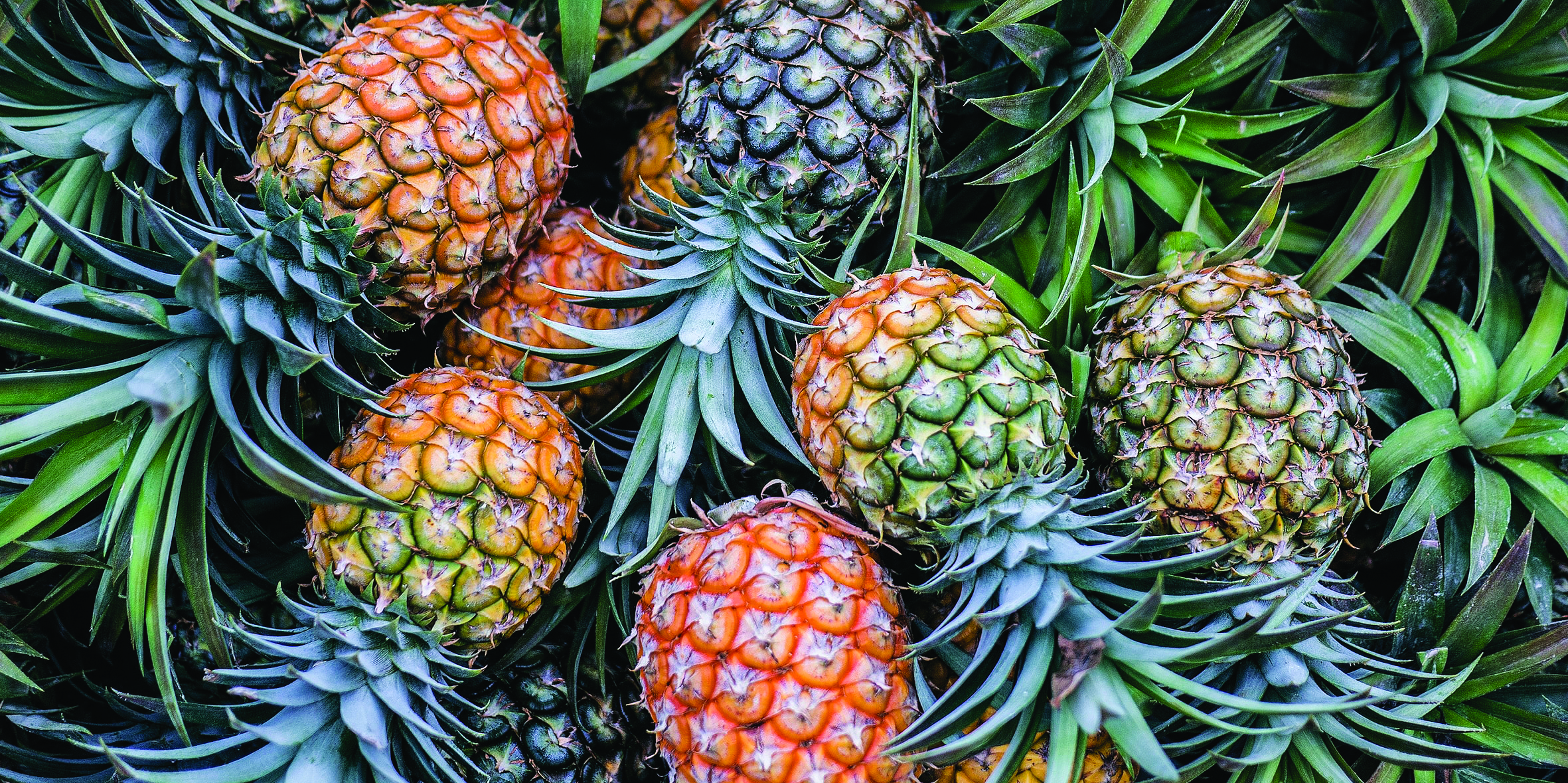b l o g
j a n u a r y 2 0 2 1

Pineapple cropping requires full commitment from the farmer in terms of weed control and plant nutrition, otherwise the farmer will get little to nil production
By Kyle Stice, Manager of Pacific Island Farmers Organisation Network
To be successful in pineapple cropping, the farmer has to be serious and fully committed to the crop, since this crop requires a continuous and intensive care over the entire cropping period.
This cropping period with pineapple is generally quite longer than other root crops or vegetables; a pineapple plant crop can take up to 24 months to come into production while vegetables such as cabbage or tomato take only 1-3 months.
Pineapple being a slow developing plant is easily over grown by weeds and can be completely destroyed or, if not too long over grown and cleaned at least loses a number of month’s growth time as well as producing lower yields. Continual weed control in pineapple cropping is an absolute necessity; chemical spray control as well as hand weeding several times per year. Total crop failure is expected if the fields are neglected for a number of months.
Furthermore the farmer is required to have patience, since a pineapple crop takes 1 to 2 years before yielding a marketable harvest.
What to expect from pineapple cropping
From a 1 ha producing area (= 50,000 plants), with 1/3 under Plant Crop (PC), 1/3 under 1st Ratoon crop (1st R), and 1/3 under 2nd Ratoon crop (2nd R), a good farmer can realise the following harvest of marketable fruit;
- For PC between 75-85% of planted crop, which equals between 12,500 and 14,165 fruits 1/3 ha,
- And for 1st R between 56% to 72% from the planted crop which equals between 9,400 and 12,000 fruits 1/3 ha,
- And for 2nd R between 43% or 61% from planted crop, which equals between 7, 100 and 10,200 fruits 1/3 ha.
The declining results in harvest allow for a number of plants;
- Not growing well
- Not fruiting
- Malformed fruit
- Rat or other rodent damage
- Sunburn damage
The lower results are to be expected for less optimum performance farming, such as late weeding or reduced fertilizer application, whereas the high results can be expected from optimum performing farming practices.
In efficient husbandry practices cropping should not go beyond a 2nd ratoon crop, since after each harvest in general the number of plants is reduced by a range of reasons, resulting in more open spaces. This means more weed growth and less fruits grown, as well as lower quality and reduced size of fruit.
This cropping schedule up to only 2nd ratoon means a total cropping cycle with three harvests takes 3.5 to 4 years. With a diligent farming approach, the good farmer can spread his harvest practically over the whole year, taking advantage of the higher price per fruit in the off season. The normal season in Vanuatu can be expected t stretch from early November till late January. Pineapple off-season runs from February until October.
Realistic expectations will give a 40-50% of the crop in season or over a 12 week period, and 50-60% of the crop in the off season or over a period of 40 weeks.
Fruit size will not be equal over the entire harvest. Good crop maintenance fruit weight from 0.5-3.5kg can be expected, with most fruits ranging between 1-2kg, or an average of 1.5kg.
Next: Pineapple Planting Material
